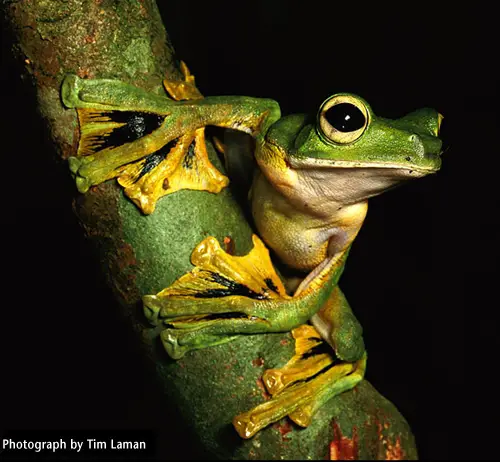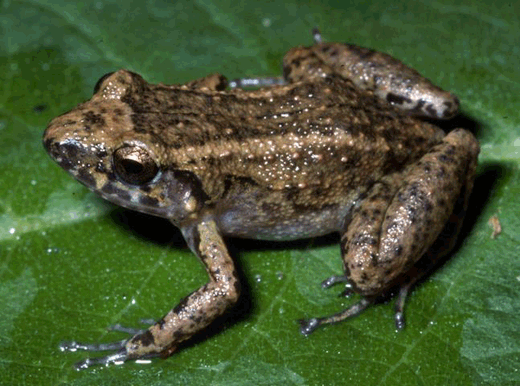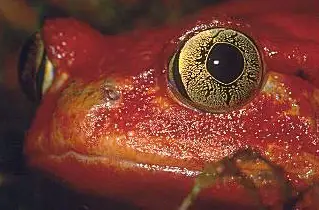Wallaces Frog
In the world of amphibians, Wallaces Frog is what might be called an overachiever.
Not content merely to do the things that other frogs do, he not only swims, hops and catches bugs, he also flies. Maybe he saw the birds avoiding predators that way, who knows, but Wallace’s Frog has taken to air travel.

Wallaces Flying Frogs can leap about fifty feet
Wallace’s Flying Frog, also known as the Parachute Frog, lives in the very thick and dense jungles of Malaysia and Borneo, in the tropical areas.
They spend their lives entirely in the trees, coming down only to mate and lay their eggs in the small ponds or waterways.
When Wallaces frog is threatened or is hunting for food, he will jump from a branch, spread out his four well webbed feet and the membranes between their toes and loose skin flaps on their sides catch the air as they fall, helping them to glide, sometimes 50 to 75 feet, and then land gently, using the extra thick pads on his feet, on a tree in the neighborhood, or even on the ground.
While the Wallace’s flying frog isn’t the only gliding frog, it is however the largest one, and the one which flies the furthers.
Their black color that is on the foot webs will help to distinguish them from the other flying frogs.
Wallaces frogs are usually bright neon type green, with sides of yellow and may grow from 4-5 inches long.
Their main diet is insects, which they catch during their aerial forays.
Wallaces frog does mate in the traditional way, in the early spring, when they climb down from the trees to deposit their eggs, often as many as several hundred, into a ditch or pond, or even a deep puddle.
However, they are very prone to breeding and laying their many eggs in the stagnant and often fetid holes that are used by the Asian Rhinoceros, (which is nearly extinct) and it is conjectured that further decreases in rhino populations may negatively affect the species.
At present Wallaces frog population is stable, but if the population of the Asian Rhinoceros declines further there are fears that it will negatively affect the population of the frogs as well.



this is a big eyed flying leap frog and it look so sweet!
Awwww I just love it :)
its so great